
Lifestyle Management
Key elements in lifestyle management
- Education: Diabetes education is an important first step. All people with diabetes need to be informed about their condition.
- Physical activity: Regular physical activity helps your body lower blood glucose (sugar) levels, promotes weight loss, reduces stress and enhances overall fitness.
- Nutrition: What, when and how much you eat all play an important role in regulating blood sugar levels.
- Weight management: Maintaining a healthy weight is especially important in the management of type 2 diabetes.
- Medication: Type 1 diabetes is always treated with insulin. Type 2 diabetes is managed through physical activity and meal planning and may require medications and/or insulin to assist your body in controlling blood sugar more effectively.
- Stress management: Learning to reduce stress levels in day-to-day life can help people with diabetes better manage their condition.
- Blood pressure: High blood pressure can lead to eye disease, heart disease, stroke and kidney disease, so people with diabetes should try to maintain a blood pressure level below 130/80. To do this, you may need to change your eating and physical activity habits and/or take medication(s).
Techniques for self-care
Helpful suggestions on how to practice self-care with diabetes.
Management and self-care
There are seven key areas of self-care behaviours that help manage diabetes.
Healthy eating
Learn more about the different tools used by people with diabetes. Eating healthy food is part of living a wholesome life. However, having diabetes doesn’t exclude you from eating your favorites foods or going to your favorites restaurants. But you need to know that different foods affect your blood sugar differently.
Physical activity
Activity has many health benefits in addition to losing weight. Physical activity lowers cholesterol, improves blood pressure, lowers stress and anxiety, and improves your mood. Being active can also keep your blood glucose levels in check and your diabetes under control.
Monitoring
Regular monitoring of your blood sugar levels gives you the information you need to make decisions. Testing your blood sugar lets you know when your levels are on target and it informs your decisions on activity and food so that you can live life to the fullest.
Taking medication
Taking the right medications will help you have greater control over your diabetes and help you feel better. Insulin, pills that lower your blood sugar, aspirin, blood pressure medication, cholesterol-lowering medication are a few of the medicines used to reduce your risk of complications.
Problem solving
Encountering struggles with your diabetes control will happen. You can’t plan for every situation you may face. However, learning from struggles and developing plans for dealing with problems in the future will help you be successful.
Reducing risks
Having diabetes puts you are a higher risk for developing other health problems. Understanding the risks is the first step towards reducing your chances of diabetes-related complications.
Healthy coping
Diabetes can not only affect you physically, but emotionally as well. Diabetes and diabetes management can leave you experiencing emotional highs and lows, but the important thing is to realize these emotions are normal and take the steps to reduce the negative impact they can have on your self-care.
Almost everyone, whether or not they have diabetes, benefits from regular exercise. Well-known health benefits include weight loss, stronger bones, improved blood pressure control, lower rates of heart disease and cancer as well as increased energy levels. Regular exercise has special advantages if you have diabetes. Regular physical activity improves your body’s sensitivity to insulin and helps manage your blood sugar levels.
Exercise is a form of physical activity that is done at enough intensity to improve your fitness. Resistance training, brisk walking, cycling, and jogging are examples of exercise. As exercise is more challenging than just accumulating physical activity through your day, it often needs some planning, a certain level of ability, and a little more effort.
Benefits of exercise
While regular exercise often requires a commitment of both time and energy, the benefits of exercise are greater than that of general physical activity.
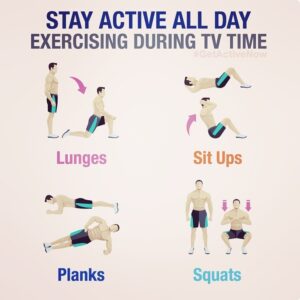 What are the immediate benefits?
What are the immediate benefits?
Exercise (such as brisk walking or resistance training) uses more muscles at greater intensity, so more energy is used up. This allows you to control your blood sugar more easily.
What are the benefits if I keep at it?
Over the long term, exercise can result in:
- Improved fitness and body composition.
- Reduced complications of diabetes such as lowered risk of heart disease.
- Improved diabetes, including blood sugar, blood fats, and blood pressure.
- Improved overall fitness and health.
You can enjoy many things in life more easily.
What kind of activity is best?
Both aerobic and resistance exercise are important for people living with diabetes.
Aerobic exercise
Aerobic exercise is continuous exercise such as walking, bicycling or jogging that elevates breathing and heart rate.
Resistance exercise
Resistance exercise involves brief repetitive exercises with weights, weight machines, resistance bands or one’s own body weight to build muscle strength. If you decide to begin resistance exercise, you should first get some instruction from a qualified exercise specialist, a diabetes educator or exercise resource (such as a video or brochure) and start slowly.
Interval training
Interval training involves short periods of vigorous exercise such as running or cycling, alternating with 30 second to 3 minute recovery periods at low-to-moderate intensity or, rest.
Safety first
- If you have been inactive for some time, talk to your doctor before starting any exercise program that is more strenuous than brisk walking.
- Make sure you wear comfortable, proper-fitting shoes.
- Wear your Medic Alert® bracelet or necklace.
- Listen to your body. Speak to your doctor if you are very short of breath or have chest pain.
- If you take insulin or medications that increase insulin levels, monitor your blood sugar before, during and many hours after your activity to see how it affects your blood sugar levels.
- Carry some form of fast-acting carbohydrate with you in case you need to treat low blood sugar (hypoglycemia), for example, glucose tablets or Life Savers®.
- If you live with type 1 diabetes, speak to your health-care provider about additional strategies to reduce the risk of hypoglycemia during and after exercise.
How much is enough?
Your goal should be to complete at least 150 minutes of moderate- to vigorous-intensity aerobic exercise each week, (e.g. 30 minutes, 5 days a week).
You may have to start slowly, with as little as 5 to 10 minutes of exercise per day, gradually building up to your goal. The good news, though, is that multiple, shorter exercise sessions of at least 10 minutes, adding up to 90-140 minutes per week, can have some benefits for people with diabetes.
As you begin your exercise program and continue to build on it, be sure that you have no more than 2 consecutive days without exercise. If you are able and when you are ready, try adding resistance exercises like lifting weights 2-3 times a week.
When you add resistance exercise, you should get some help from a qualified exercise specialist.
Note: You may consider interval training to increase improvements in fitness levels for type 2 diabetes, and to lower the risk of hypoglycemia in type 1 diabetes. Speak with your healthcare provider or qualified exercise specialist if you plan to start interval training.
Exercises & Tips and Tutorials
Obesity is a chronic health problem that is often progressive and difficult to treat. An estimated 80% to 90% of people with type 2 diabetes have overweight or obesity. Obesity is also becoming more prevalent in people with type 1 diabetes; one study reported a sevenfold increase in the last 20 years. In addition, intensive insulin therapy and some antihyperglycemic medications are associated with weight gain which, in turn, leads to obesity-related comorbid conditions.
The relationship between increasing body fat accumulation and adverse health outcomes exists throughout the range of overweight and obesity in men and women of all age groups. Weight loss has been shown to improve glycemic control by increasing insulin sensitivity and glucose uptake and diminishing hepatic glucose output.
Ways to measure healthy weight
Body Mass Index (BMI)(This link opens in a new window) compares a person’s weight to their height. For most adults aged 18 to 65, a BMI of 25 to 29.9* is overweight and, 30 or more is obese.
Waist Circumference (WC) is the measurement around the waist. Too much fat around the waist is linked to health risks. WC goals differ depending on ethnic background and gender. In general, a healthy WC for men is less than 40 in (102 cm) and for women it is less than 35 in (88 cm).
If overweight, losing 5 to 10% of your current body weight is a healthy goal. For someone who is 200 lbs (90 kg), 5 to 10% is 10 to 20 lbs (4.5 to 9 kg).
For more information on measuring and interpreting your BMI and WC, visit this Health Canada guide(This link opens in a new window).
Note: these assessments should not be used on pregnant or lactating women, very muscular adults, adults with very lean build. BMI values are age and gender independent, and may not be correct for all ethnic populations.
The benefits of healthy weight
A healthy weight can:
- help you prevent or manage diabetes
- improve blood sugar, blood pressure and blood lipids (fats)
- reduce the risk of complications such as heart disease and stroke
- improve general well-being and energy levels
Healthy eating and physical activity are key factors in managing weight. Many things can make managing weight a challenge including stress, some medical conditions and certain medications.
Who can help me?
There are many health-care providers (e.g. dietitian, doctor, diabetes educator, pharmacist) who can help you. Check with them before taking any weight loss medications, supplements, starting intense exercise or changing your diet.
Believe in yourself
Each person’s body has its own size and shape. Feel good about yourself and the behavior changes you make. Remember to think long-term, but make changes gradually.
Weight management resources
Use the following resources to help monitor, achieve and maintain a healthy weight while living with diabetes.
Tips for Healthy Eating, Diabetes Prevention and Management
Diabetes occurs when your body cannot properly use and store food for energy. Your body’s main source of energy is called glucose, a form of sugar that comes from foods that contain carbohydrate, such as fruit, milk, some vegetables, grains, starch foods and sugar. When your body cannot use glucose for energy, the glucose builds up in your blood leading to high blood sugar levels.
Depending on the type of diabetes, pills, insulin, or other injectable medication may be needed to manage blood sugar.
Type of Diabetes | How this type is treated |
Type 1 diabetes The pancreas does not produce insulin. Glucose builds up in your blood instead of being used for energy. | 1. Insulin injections |
Type 2 diabetes The pancreas does not produce enough insulin, or your body does not properly use the insulin it makes. | 1. Healthy eating |
Pre-diabetes Blood glucose levels that are higher than normal, but not high enough to be diagnosed as type 2 diabetes | 1. Healthy eating |
Gestational diabetes High blood sugar that happens during pregnancy. | 1. Healthy eating |
Eat a variety of healthy foods each day
Even if someone is taking diabetes medications, all types of diabetes are managed better with healthy eating. Knowing what to eat and how much to eat will help you manage your blood sugar levels. Eat more vegetables. These are very high in nutrients and low in calories. Include lean animal proteins such as fish, chicken, lean meats, low-fat cheese, eggs, dried beans and peas as part of your meal. Select plant oils such as olive and canola, and nuts instead of animal fats and coconut oil. Have yogurt and a piece of fruit to complete your meal. Eat small portions of grains and starches including rice, potato, pasta, cereals, breads, corn.
Fruits/Grains & Starches
Examples: Orange, apple, potatoes, brown rice, spaghetti
Vegetables
Examples: Broccoli, lettuce, green beans, bell peppers
Protein Foods
Examples: Lean beef, chicken, pork, fish, eggs, tofu, yogurt, milk (skim, 1%), cheese
Fats
Examples: Non-hydrogenated margarine, canola oil, olive oil, peanut oil.
No alcohol consumption
Alcohol can affect blood glucose levels. It can also cause you to gain weight and change how your body uses medicine. Take care of your whole body for a healthier life! Manage your diabetes in a healthy way!
 Eating away from home has become a part of many people’s lifestyle. Even if we pack our own meals to eat at work, we often eat at restaurants, or buy food from take-out counters, grocery stores or get door delivery. Making healthy choices when we eat foods that are prepared at home can help to manage diabetes.
Eating away from home has become a part of many people’s lifestyle. Even if we pack our own meals to eat at work, we often eat at restaurants, or buy food from take-out counters, grocery stores or get door delivery. Making healthy choices when we eat foods that are prepared at home can help to manage diabetes.
Getting the right balance and portion size
A Food Guide contains three major food groups:
- Vegetables and fruits
- Whole grain products
- Protein foods
Choosing foods from all the food groups ensures that your body gets all the nutrients it needs. The Plate Method below can help you to manage portions and get the right balance when you plan your meals.
 Check your portion sizes
Check your portion sizes
Foods eaten away from home are often served in portions that are too large. In addition to the Plate Method, the Handy Portion Guide also helps to keep your portion sizes in check.
To keep your blood glucose levels stable while eating away from home you may need to adjust the portion size, your insulin dose (if you use insulin), or your physical activity. If the serving size is larger or smaller than your usual portion or if the meal is delayed, your blood glucose level will be affected. In a restaurant, you can ask for your leftovers to be packed, share your entrée with someone else, or request for half portions.
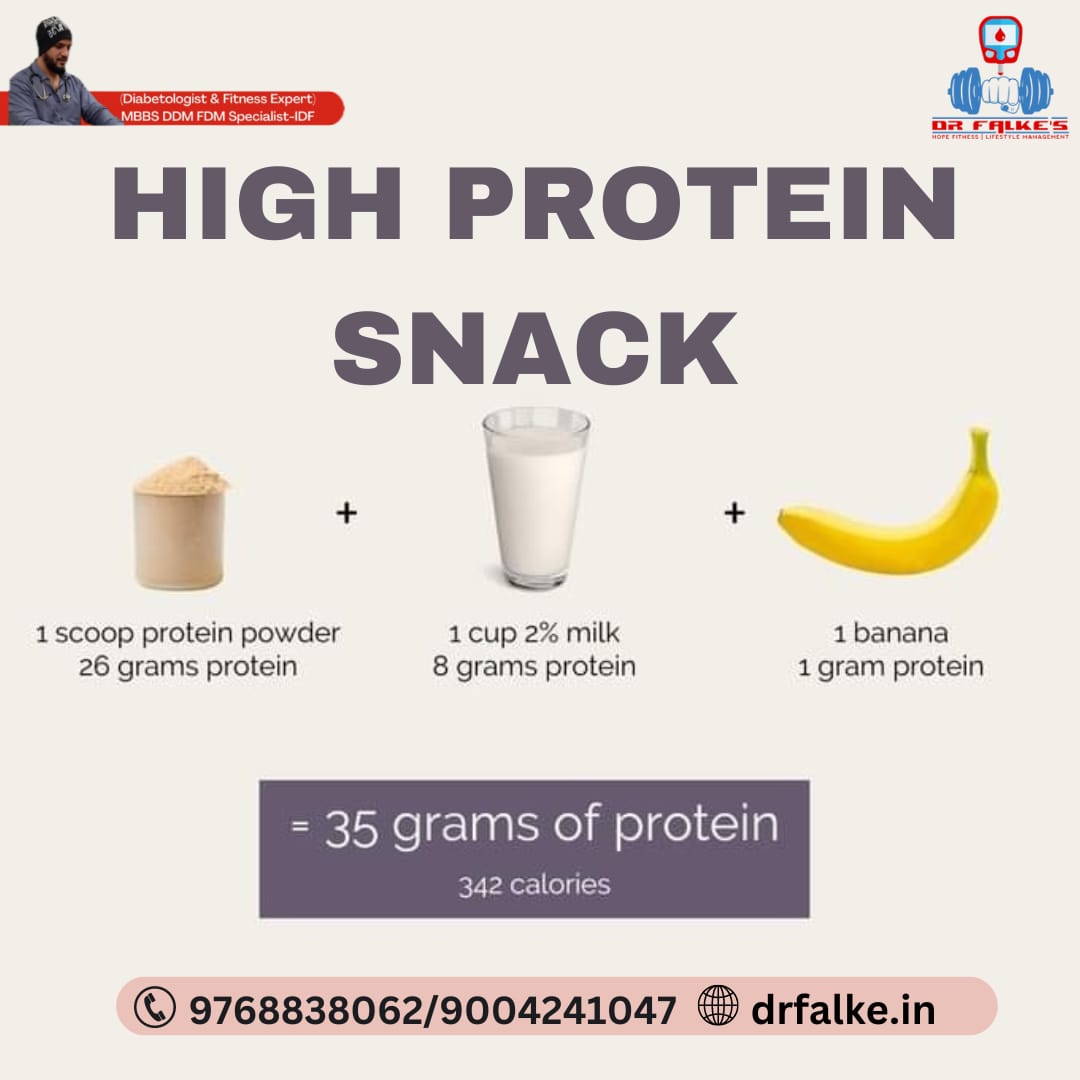 Handy portion guide
Handy portion guide
Your hands can be very useful in estimating appropriate portions. When planning a meal, use the following portion sizes as a guide:
Packing meals to take with you
When possible, packing meals to take with you is the best option. Bring healthy food from home with you, such as a lunch container filled with brown rice (about the size of your fist), palm size of lean meat, chicken or fish and plenty of raw or cooked vegetables; or sandwiches on whole grain breads, nuts, fruits, and washed, pre-cut vegetables.
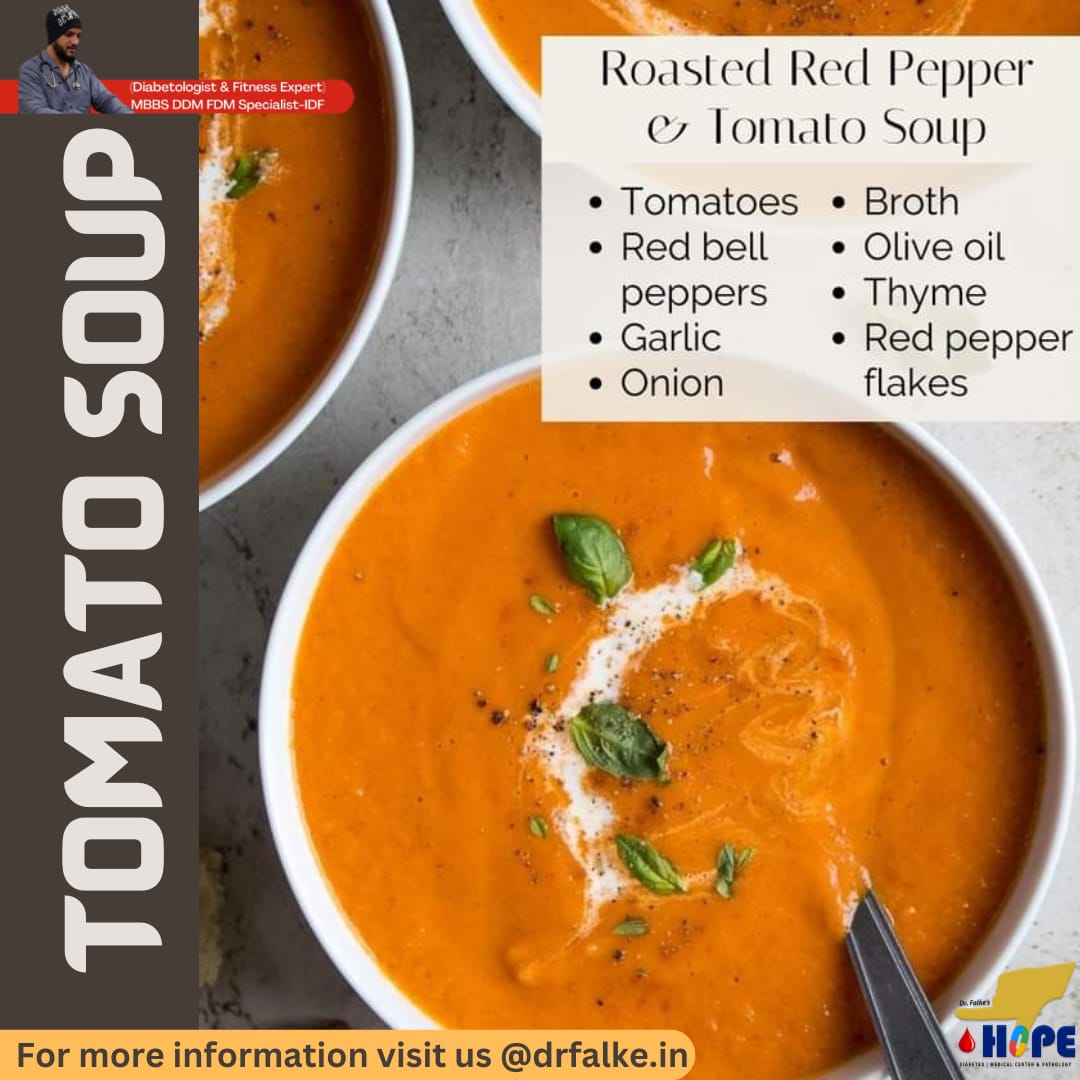 Watching your carbohydrates while away from home
Watching your carbohydrates while away from home
Foods that contain carbohydrates raise your blood glucose. To manage diabetes, you need to know which foods contain carbohydrates and how much carbohydrate is in your meal or snack. This is also important to watch when you are away from home. If you are on insulin, speak to your healthcare team about planning your meals and insulin adjustments.
General guidelines on carbohydrate amount
The amount of carbohydrate you should eat is based on your individual needs; talk to the dietitian on your health care team to see what amount is right for you. Below is a general guideline:
Carbohydrate Amount | Women | Men |
In a meal | 45 to 60 grams | 60 to 75 grams |
In a snack | 15 to 30 grams | 15 to 30 grams |
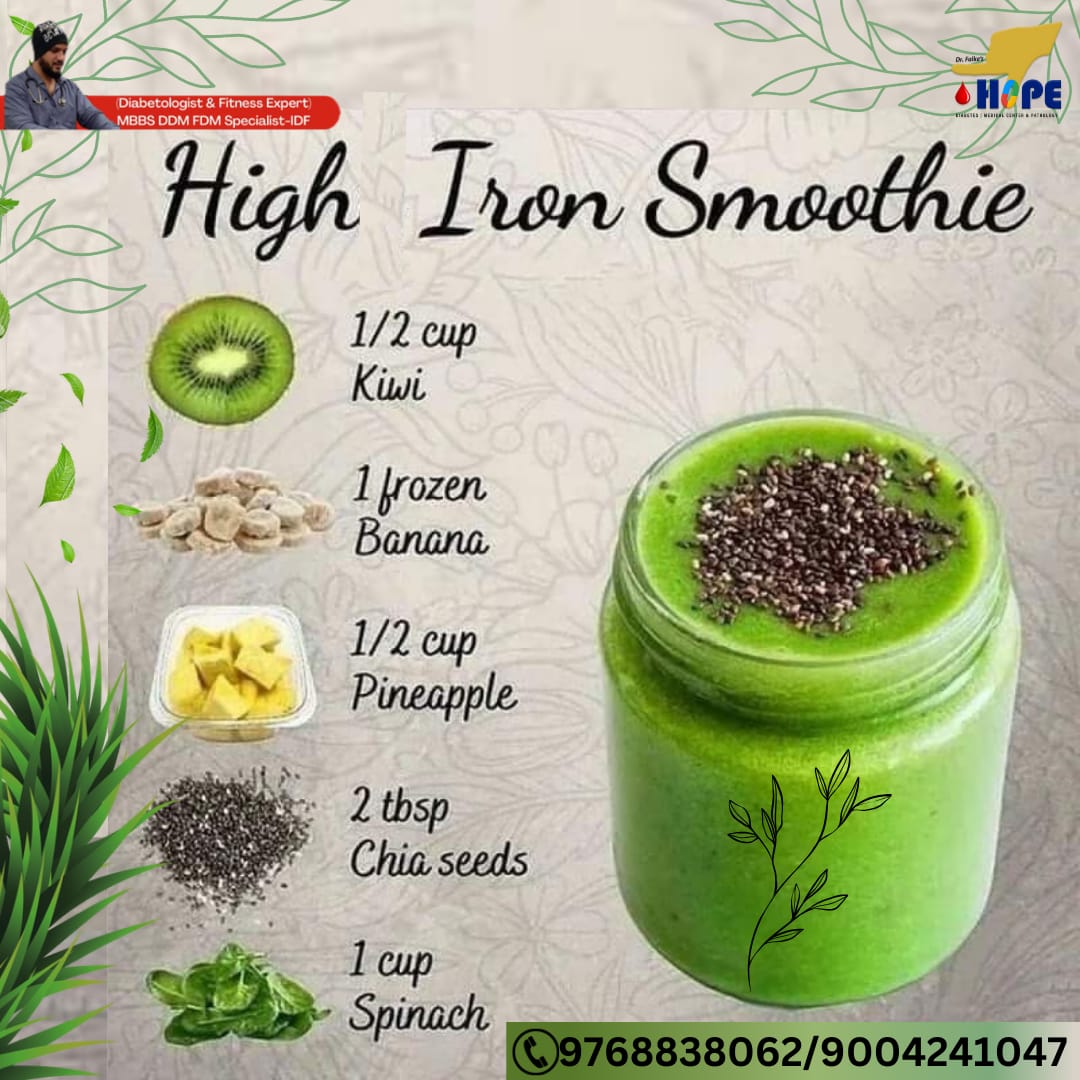 What should my blood glucose be before and after meals?
What should my blood glucose be before and after meals?
Know your target and take your glucose meter with you when you are eating away from home. This way you will know whether the amount of carbohydrate you consume is too little, just enough, or too much. This will help you to plan for future meals. Start by checking your blood glucose before you eat and again 2 hours after the meal.
If your blood glucose is too high after meals, ask yourself:
- Did I include some protein and fat? (including protein and fats helps keep blood glucose from going too high)
- Did I eat too many carbohydrates? (carbohydrates are foods that raise your blood glucose the most)
- Did I get enough exercise? (exercise can help keep your blood glucose in target)
- Should I talk to my healthcare team about changing my medications?
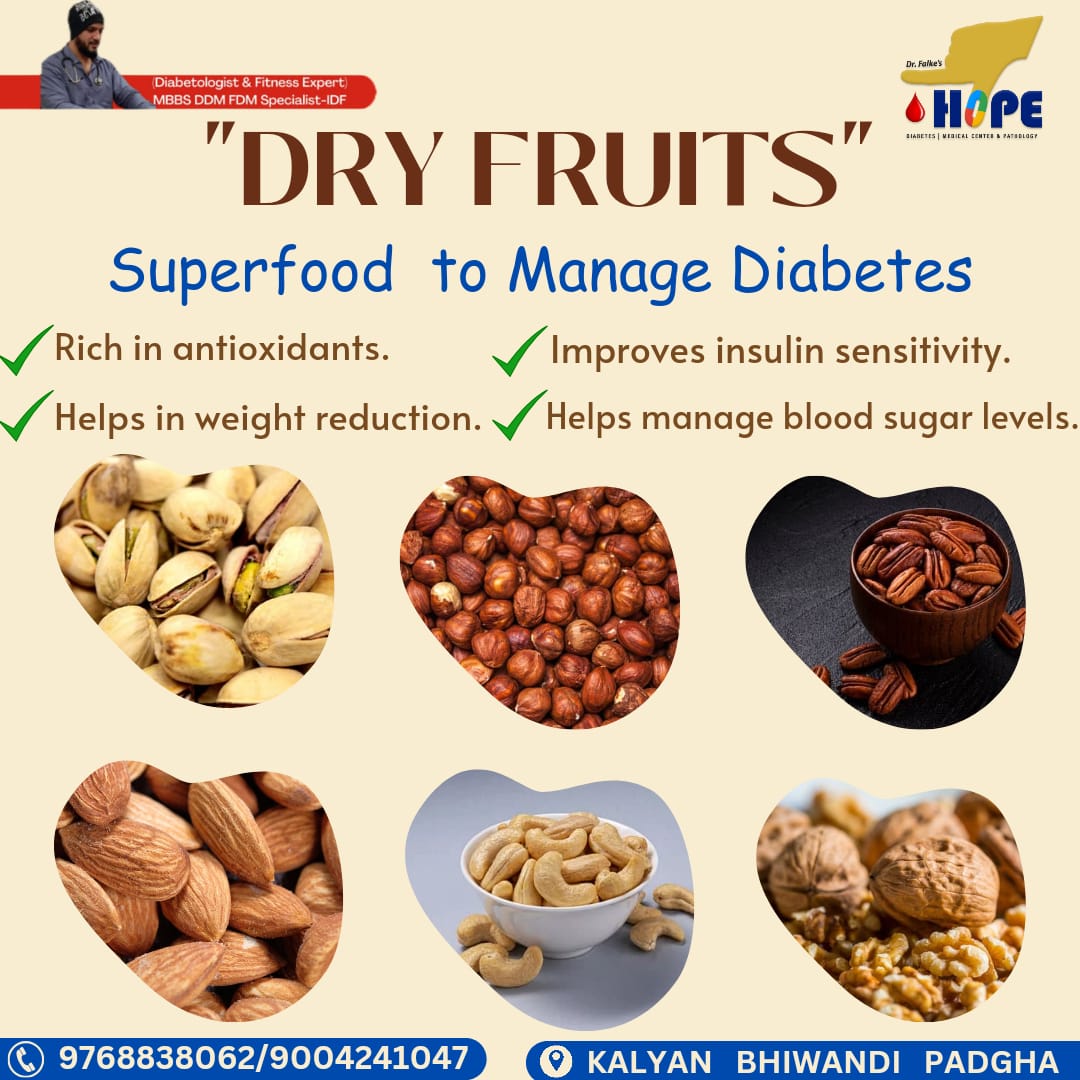 Try to eat on time
Try to eat on time
Your meals should be spaced 4 to 6 hours apart. If your meal will be earlier or later than usual, you may need to adjust your insulin (if you use insulin) or change the timing of a snack. This will avoid having a high or low blood glucose level. If you know you will be eating away from home, don’t skip meals or snacks if they are part of your meal plan. Skipping meals may cause you to overeat when you get to the restaurant or event.
Diabetes Meal Planning
A meal plan is your guide for when, what, and how much to eat to get the nutrition you need while keeping your blood sugar levels in your target range. A good meal plan will consider your goals, tastes, and lifestyle, as well as any medicines you’re taking.
A good meal plan will also:
- Include more nonstarchy vegetables, such as broccoli, spinach, and green beans.
- Include fewer added sugars and refined grains, such as white bread, rice, and pasta with less than 2 grams of fiber per serving.
- Focus on whole foods instead of highly processed foods as much as possible.
Carbohydrates in the food you eat raise your blood sugar levels. How fast carbs raise your blood sugar depends on what the food is and what you eat with it. For example, drinking fruit juice raises blood sugar faster than eating whole fruit. Eating carbs with foods that have protein, fat, or fiber slows down how quickly your blood sugar rises.
You’ll want to plan for regular, balanced meals to avoid high or low blood sugar levels. Eating about the same amount of carbs at each meal can be helpful. Counting carbs and using the plate method are two common tools that can make planning meals easier too.
Counting Carbs
Keeping track of how many carbs you eat and setting a limit for each meal can help keep your blood sugar levels in your target range. Work with your doctor or a registered dietitian to find out how many carbs you can eat each day and at each meal, and then refer to this list of common foods that contain carbs and serving sizes. For more information, see Carb Counting.
The Plate Method
It’s easy to eat more food than you need without realizing it. The plate method is a simple, visual way to make sure you get enough nonstarchy vegetables and lean protein while limiting the amount of higher-carb foods you eat that have the highest impact on your blood sugar.
Start with a common dinner plate:
- Fill half with nonstarchy vegetables, such as salad, green beans, broccoli, cauliflower, cabbage, and carrots.
- Fill one quarter with a lean protein, such as chicken, turkey, beans, tofu, or eggs.
- Fill one quarter with carb foods. Foods that are higher in carbs include grains, starchy vegetables (such as potatoes and peas), rice, pasta, beans, fruit, and yogurt. A cup of milk also counts as a carb food.
Then choose water or a low-calorie drink such as unsweetened iced tea to go with your meal.
About Portion Size
Portion size and serving size aren’t always the same. A portion is the amount of food you choose to eat at one time, while a serving is a specific amount of food, such as one slice of bread or 8 ounces (1 cup) of milk.
These days, portions at restaurants are quite a bit larger than they were several years ago. One entrée can equal 3 or 4 servings! Studies show that people tend to eat more when they’re served more food, so getting portions under control is really important for managing weight and blood sugar.
Meals at Home
Planning meals to prepare at home is a good way to improve your food choices. Planning can also help you avoid less healthy drive-through meals.
Meals At Restaurants
Before you go out, check the restaurant menu online. Look for healthy choices ahead of time rather than choosing a meal at the restaurant.
Many restaurants serve more food than one person needs at one meal.
Snacks
Stock up on nutritious snacks at home so you have a healthy option to grab on the go.
Consider the following:
- Fruit such as apples, oranges, bananas, grapes, and canned fruit without added sugars.
- Washed and chopped celery, carrots, and cucumbers.
- Low-fat and fat-free yogurt without added sugars, milk, and low-fat cheeses.
- Whole-grain crackers and breads.
- Proteins such as nuts and seeds.
Diabetes-friendly recipes
You don’t need to have diabetes to enjoy our recipes-anyone can enjoy these! Each recipe includes the amount of carbohydrate, sugar, fat, sodium and calories in each serving.
If you’ve been diagnosed with diabetes or know someone who lives with diabetes, you’ll know that the most important response is lifestyle changes like diet and exercise for diabetes. Food has a massive impact on the way we feel both mentally and physically. To improve your eating habits, you may want to learn some new recipes for diabetes. If you have a few new and interesting foods and some easy Indian diabetic recipes for the things you love, you will be able to treat yourself more often than you think. In this article, we will be looking at the recommended foods to eat if you are diabetic and also some healthy recipes you can whip up in 30 minutes or less. Let’s get started!
What should you eat if you are diabetic?
Easy 30 min recipes for diabetes
Breakfast, Lunch and Dinner Ideas
Healthy Vegetarian Recipes for Diabetes
1) Protein Poha
Is poha good for diabetes? With a low-calorie count and the right amount of nutrition to start the day, it is ideal. It is easy to make and modify to your preferences.
Ingredients for 2 servings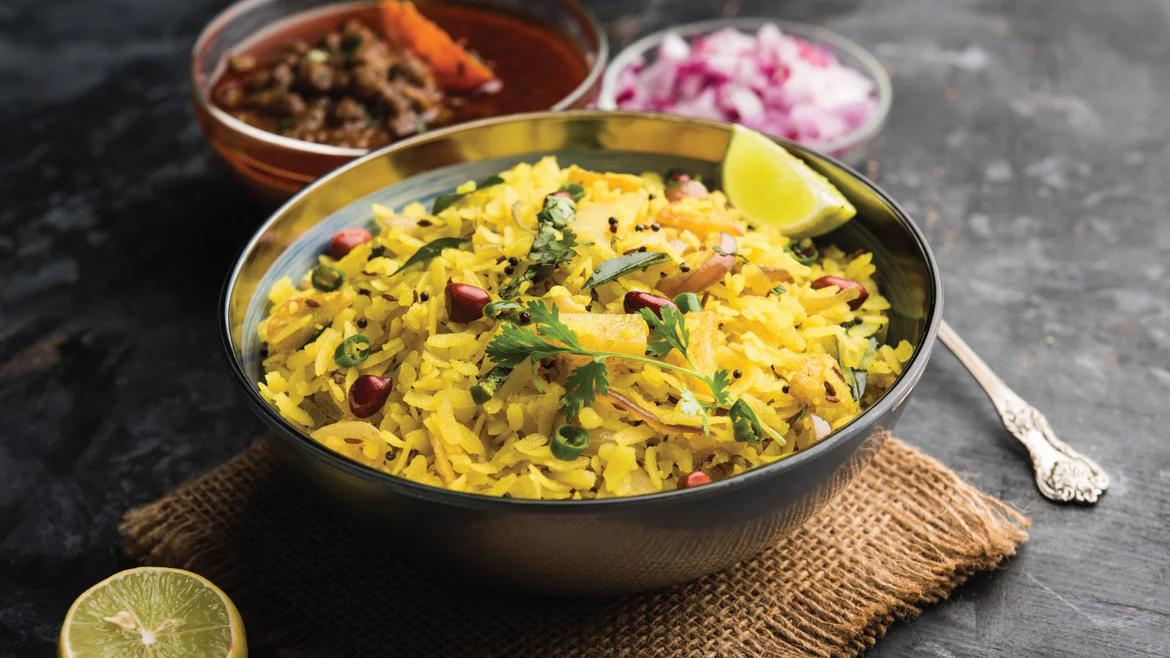
- 60gm – Poha rice
- 30 gm sprouts or paneer
- 2 diced green chilli
- 2 spoons of peanuts
- ½ cup of chopped tomatoes
- 1 spoon – mustard seeds
- ¼ teaspoon – turmeric powder
- ½ teaspoon – red chilli powder
- 2 tablespoons – cabbage, capsicum and peas (other vegetables of your choice)
- Curry leaves
- 1 tsp – cooking oil
- Salt as per preference
- Garnish with coriander
Method:
Step 1: If you’re using sprouts, boil sprouts until they become soft.
Step 2: In a bowl, add half a cup of water and the poha and set aside. Use cold water to rinse if you want it out of the water immediately.
Step 3: Put a pan on the stove, add the oil and roast some peanuts in it. Once they have cooked, take them out to add later on.
Step 4: After removing the peanuts, add mustard seeds to the oil and cook till a crackling or popping noise begins. At that point, add chillies and curry leaves.
Step 5: Add all the vegetables except the tomatoes and cook till they are soft, saute for more even cooking. Add salt along with chilli powder and turmeric.
Step 6: Add tomatoes and cook for 2 – 3 minutes after mixing well with the rest of the ingredients. Add a little water and wait for the tomatoes to become squishy.
Step 7: Add sprouts or paneer as per your choice and mix until well coated with the mixture.
Step 8: Now add the poha. Keep low heat and mix while you cook for around 3 – 5 minutes, after which you can add the peanuts and coriander.
Step 9: Turn off the flame and let it rest.
Step 10: Enjoy your vegetable protein poha!
2) Multi-Flour Idli
Who doesn’t love soft and pillowy idli? But if you are diabetic, you might have to cut on the intake of idlis. But you can always switch to multi-flour idlis for deliciousness and health.
Ingredients:
- 1/2 cup urad dal
- 1 tsp fenugreek seeds
- 1/2 cup bajra
- 1/2 cup jowar
- 1/2 cup ragi
- 1/2 whole wheat flour
- Salt to taste
Method:
Step 1: Combine the split black lentils and fenugreek seeds in a bowl and soak them for a couple of hours.
Step 2: Drain well and make a smooth blend with 3/4 cup of water.
Step 3: Transfer the smooth mixture into a big bowl, add the different flours to the mixture, add salt and 1 3/4 cups of water. Mix it well.
Step 4: Cover and keep it overnight to ferment.
Step 5: Give the batter a good mix in the morning and pour spoonfuls of batter into well-greased idli stands.
Step 6: Steam the idlis for 10 minutes until they are cooked.
Step 7: Serve idlis with sambar or chutney!
3) Rava Upma
This is one of the easiest yet delicious breakfasts to start your day with. Let’s take a look at the recipe.
Ingredients:
- 3/4 cup rava or sooji
- 1/4 teaspoon mustard seeds, cumin seeds
- 1 teaspoon chana daal and urad daal
- 1 pinch asafoetida or hing
- 1 – 2 sprigs of curry leaves
- 1 medium onion, finely chopped
- 1/2 tsp ginger grated
- 1 – 2 green chillies, chopped
- 1/2 cup frozen peas and other veggies like beans or carrots
- 1 large tomato, finely chopped
- 2 tsp of coriander leaves
- 1 tsp ghee/oil
- One large glass buttermilk
Method:
Step 1: Add rava or semolina to a pan and dry roast it on low medium flame until it turns crunchy. Remember to keep stirring to prevent rava from burning.
Step 2: In another pan, pour oil and add mustard seeds followed by cumin seeds.
Step 3: When it starts spluttering, add the lentils and cook.
Step 4: Add a pinch of hing.
Step 5: Next, add the chillies and finely chopped ginger to the mix.
Step 6: Add the curry leaves too and cook until it becomes fragrant.
Step 7: Now add the chopped onions and the veggies you are using. Cook under it turns tender.
Step 8: Pour thick buttermilk and boil. Add salt and stir.
Step 9: Add the roasted rava slowly and mix it well. Make sure there are no lumps.
Step 10: Cover and cook till the water is absorbed.
Step 11: Serve hot!
4) Dal Khichdi
Another mung dal speciality, khichdi for diabetes is an easy healthy option and tastes great along with some roasted papad.
Ingredients:
- ½ cup Mung Dal
- ½ cup rice
- ¼ cup finely chopped onions
- 1 bay leaf
- Hing (Asafoetida)
- 1 teaspoon jeera (cumin seeds)
- 1 Diced green chilli
- 1 small onion – chopped
- ½ cup or 1 medium tomato
- 1 teaspoon crushed/grated ginger
- 1½ cup vegetables finely diced (carrot, peas, beans, etc).
- 1 tsp Ghee/butter/cooking oil (as per availability/preference)
Method:
Step 1: Put the rice and mung dal in separate pots and soak.
Step 2: Cut vegetables as they soak and heat the pressure cooker. Add ghee, butter or oil once it has absorbed some heat. Keep a low flame, add the jeera and bay leaf. Saute till you get the aroma and add a pinch of hing.
Step 3: Add the ginger and saute it so that it doesn’t burn, after a minute add the onions and the green chilli. Once the onions get a golden brown colour, add the tomato, turmeric and salt. If you like, you can also add a pinch or two of chilli powder.
Step 4: Saute till everything becomes mushy and add the vegetables you have chosen. You can go ahead without any vegetables too.
Step 5: At this point, the dal should be ready, drain it out and add it into the pressure cooker. Saute for a few minutes till the aroma comes out.
Step 6: Next, drain the water from the rice and add it into the cooker, followed by 4 cups of water. If you want a soft mushy texture instead of a porridge-like texture, add 3 cups. Taste the water as you cook, it should be a little salty. Add more salt if needed.
Step 7: Cover the pressure cooker and wait until 4 whistles. If you would like a more whole consistency, then cook for 2 whistles. After that, turn the flame off and let it sit until the pressure releases on its own.
Step 8: Your khichdi is ready to eat. Garnish with ghee if you like and serve.
5) Raw Moong Salad
A healthy, fresh, tangy, delicious salad that you can whip up within minutes.
Ingredients: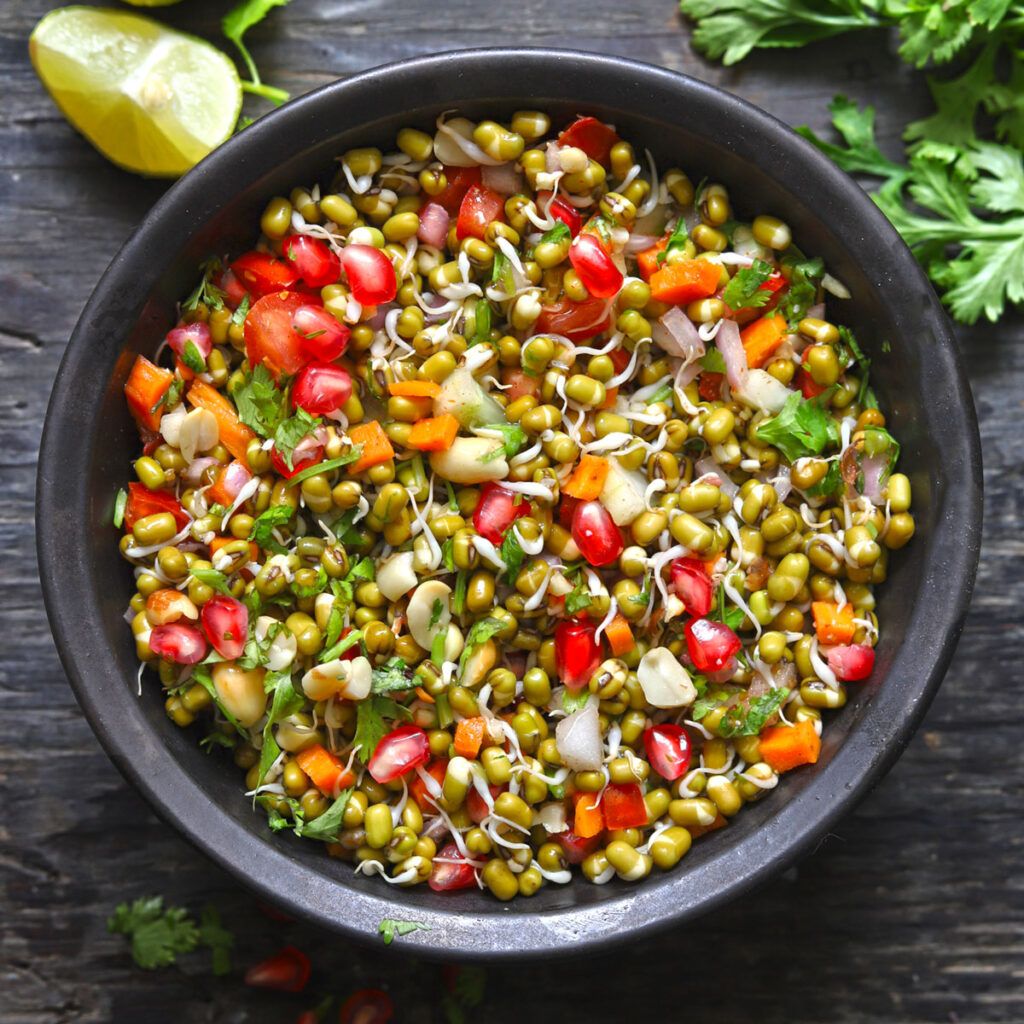
- 1 cup moong sprouts
- 3 cup hot water
- 1/2 tsp cumin powder
- ¼ tsp kashmiri red chilli powder
- ½ tsp amchur
- ¼ tsp salt
- ½ cucumber, chopped
- ½ tomato, chopped
- ½ carrot, grated
- 2 tbsp capsicum, chopped
- 2 tbsp spring onion, chopped (optional)
- 2 tbsp coriander, finely chopped
- 2 tbsp mint/pudina, finely chopped
- 1 chilli, finely chopped
- 1 tsp lemon juice
- 2 tbsp peanuts, roasted & crushed
Method:
Step 1: Blanch 1 cup moong sprouts in 3 cups hot water for 5 minutes. you can alternatively boil for 2 minutes.
Step 2: Drain off the water. make sure the moon sprouts are softened a bit yet crunchy.
Step 3: Take the blanched moong sprouts into a large mixing bowl.
Step 4: Add ½ tsp cumin powder, ¼ tsp chilli powder, ½ tsp amchur and ¼ tsp salt.
Step 5: Mix well making sure the spices are well combined.
Step 6: Further add ½ cucumber, ½ tomato, ½ carrot, 2 tbsp capsicum, 2 tbsp spring onion, 2 tbsp coriander, 2 tbsp mint, 1 chilli and 1 tsp lemon juice.
Step 7: Mix well making sure everything is well combined.
Step 8: Finally, serve moong sprouts salad garnished with 2 tbsp roasted peanuts.
6) Veg Paneer Paratha
Who says parathas have to be oily and unhealthy? Follow instructions to make veg paneer paratha for that healthy and delicious fix.
Ingredients:
For dough:
- 3/4 cups of whole wheat flour
- 1/2 tsp olive oil
- Salt to taste
For the filling:
- 1/4 boiled mashed green peas
- 1/4 grated carrots
- 1/4 cup grated paneer
- 2 tsp grated beetroot
- 1 tsp chopped coriander
- 1 tsp finely chopped green chillies
- salt to taste
Method:
Step 1: Combine all the ingredients and knead into a soft dough.
Step 2: Divide the dough and filling into 4 equal portions.
Step 3: Place filling inside each portion and seal it tightly.
Step 4: Roll out the dough and sprinkle whole wheat flour for rolling.
Step 5: Take a hot non-stick pan and apply a small brush of ghee/butter.
Step 6: Cook the paratha until you see golden brown specks.
Step 7: Serve hot with curd.
7) Spinach Paratha
Spinach Parathas are one of the most flexible vegetarian diabetic recipes and can make the meal plan for people with diabetes so much easier.
Ingredients: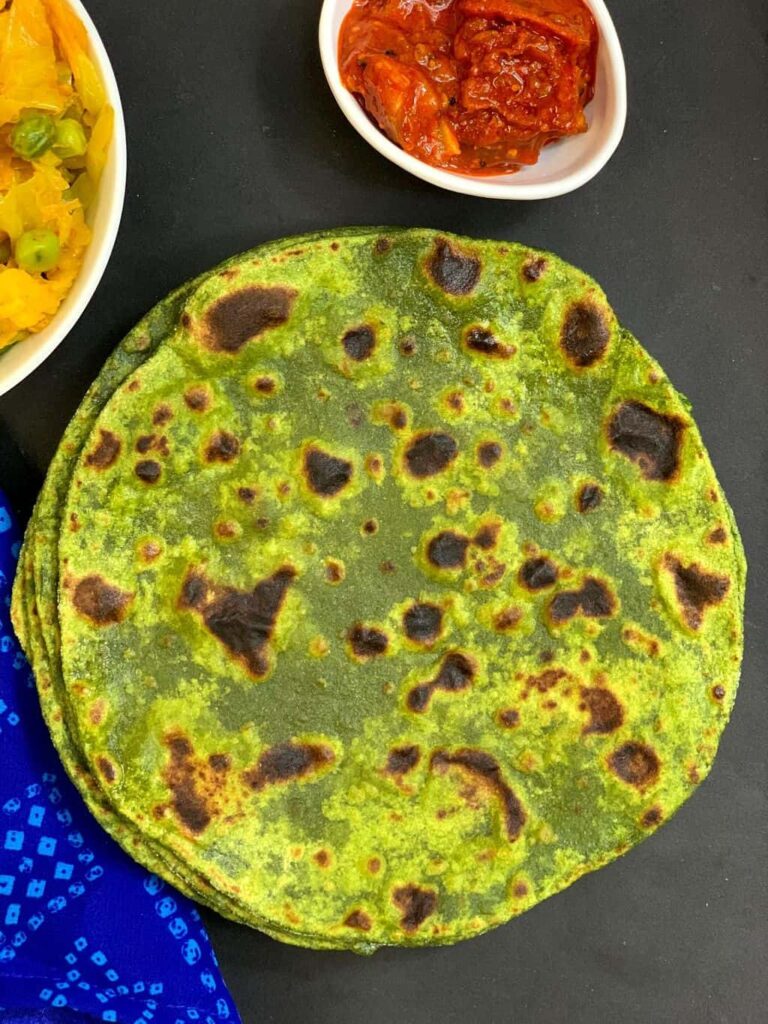
- 2 cups – Spinach (around 200 gms)
- 2.5 cups – Whole Wheat Flour
- ½ Teaspoon – cumin seeds
- 1 Green Chili
- 4 – 5 cloves of garlic (pieces from the garlic bulb)
- Salt to Taste
- Oil – for brushing
Method:
Step 1: Wash the spinach leaves thoroughly, make sure there is no grit in the leaves. Add into a mixer along with the cumin seeds, garlic and chilli and turn it into a smooth, fine paste, adding as little water as possible.
Step 2: Add flour into a bowl followed by spinach paste and some salt to taste. Mix it all together until you get a smooth doughy texture. After that, add a teaspoon of oil and mix thoroughly into the dough. Let it sit for 20 minutes.
Step 3: Pinch the dough out into evenly sized balls. Once you’re done making dough balls, take one, flatten it and apply some dry flour to both sides.
Step 4: Using a rolling pin, roll it flat into a roti shape.
Step 5: Heat up the pan and put one of the parathas on for a minute or two before flipping it over. You can drop some oil on the semi-cooked side and turn it over again. Apply oil to the other side and turn it over again.
Step 6: Your paratha is now ready to eat.
8) Ragi Dosa and Carrot Poriyal
A nice ragi dosa and some piping hot carrot poriyal is sure to make your day. Let’s see how you can make them.
Ingredients:
- 1 cup ragi flour or sprouted ragi flour – 150 grams
- ¼ cup besan (gram flour) or rice flour
- ⅓ to ½ cup finely chopped onions
- ½ teaspoon finely chopped ginger or ½ inch ginger
- ½ teaspoon chopped green chillies or 1 green chilli or serrano pepper, chopped
- 8 to 10 curry leaves chopped
- 3 tablespoons chopped coriander leaves (cilantro)
- ½ teaspoon cumin seeds
- 1 pinch asafoetida optional
- 3 tablespoons fresh grated coconut or desiccated coconut
- ½ cup buttermilk or ¼ cup curd (yoghurt) mixed in ¼ cup water
- 1.5 cups water or add as required
- Salt as required
- 2 tsp oil or ghee
Method:
Step 1: Take ragi flour and besan (gram flour) in a mixing bowl or pan. You can even use rice flour or chickpea flour instead of besan.
Step 2: Add finely chopped onions, finely chopped ginger, chopped curry leaves, chopped green chillies, chopped coriander leaves, asafoetida, cumin seeds, grated coconut and salt as per taste.
Step 3: Add buttermilk and 1.5 cups of water. To make the buttermilk, stir briskly ¼ cup curd with ¼ cup water.
Step 4: Mix very well to a thin batter.
Step 5: Cover and let the batter rest for 15 to 20 minutes.
Step 6: Heat a hot tawa and sprinkle it with some water.
Step 7: Give the batter a good mix and pour it on the pan with a ladle.
Step 8: Cook it till crisp.
Carrot Poriyal
Ingredients:
- 1 tsp moong daal
- 1 cup freshly chopped carrot
- 1/2 teaspoon mustard seeds
- 1/2 tsp urad daal
- 1 pinch asafoetida or hing
- 1 dry red chilli
- 5 – 6 sprigs of curry leaves
- 1 pinch turmeric powder
- 3 tsp freshly grated coconut
- 2 – 3 green chillies
- 1/2 tsp cumin seeds
- Salt to taste
Method:
Step 1: Soak moong dal in water for 10 minutes, drain and keep it aside.
Step 2: Put grated coconut, green chillies, cumin seeds and 1 tsp water in a grinder.
Step 3: Heat oil in a pan and put mustard seeds and hear them sizzle. Add the urad daal next.
Step 4: Add curry leaves, dry red chilly and curry leaves next.
Step 5: Next, pour the rinsed moong daal and add turmeric and finely chopped carrots and stir.
Step 6: Add 1/3 cup of water and satl to taste and let it cook.
Step 7: Add the ground coconut paste next, mix well and cook on a low flame for a minute.
Step 8: Serve hot with a side of ragi dosa.
9) Carrot Methi Subzi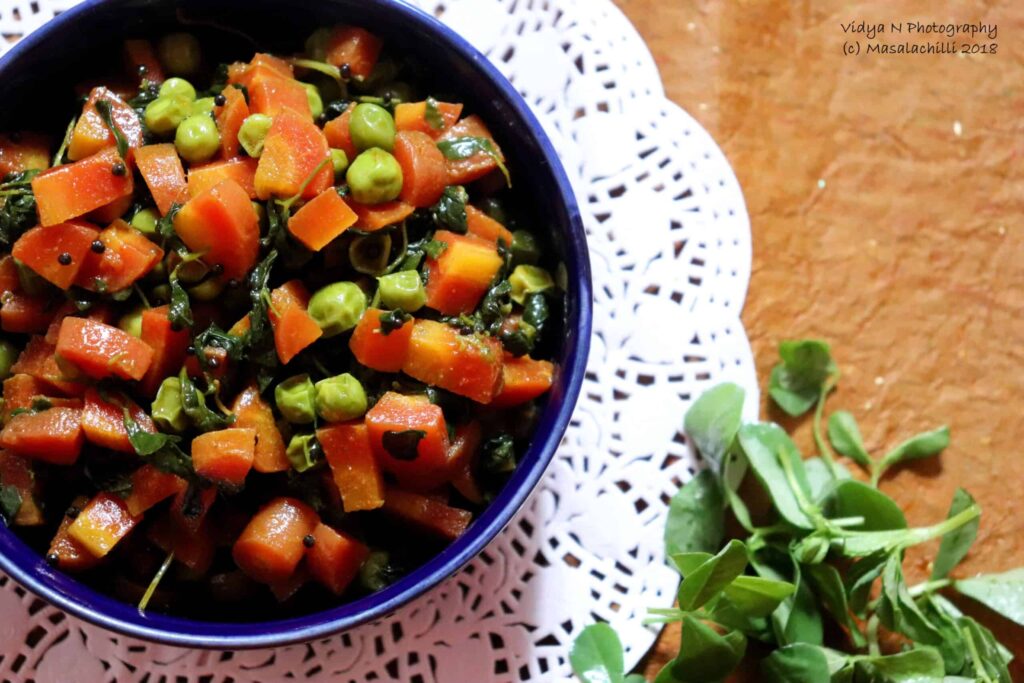
Ingredients:
Ingredient | Quantity |
Carrots | 2 cups (cut into cubes) |
Fenugreek (methi) leaves | 2 cups (chopped) |
Cumin seeds (jeera) | ½ tsp |
Onions | ¾ cup (finely chopped) |
Green chillies | 3 (finely chopped) |
Large clove of garlic | 1 (finely chopped) |
Ginger | ½ inch (finely chopped) |
Turmeric powder (haldi) | ¼ tsp |
Coriander (dhania) powder | 2 tsp |
Oil | 2 tsp |
Salt | to taste |
Preparation:
- Firstly, heat the oil in a nonstick pan and add the cumin seeds.
- Once they crackle, then add the onions, green chilies, garlic & ginger, and sauté for 2 minutes.
- Add the fenugreek leaves and sauté for another 2 minutes.
- Next, add the carrots, turmeric powder, coriander powder, salt, 1 cup of water, and mix them well.
- Finally, cover and cook the mixture over a slow flame until all the moisture has evaporated and the carrots are tender.
- Serve the dish hot.
10) Sugar Free Makhana Kheer
Ingredients: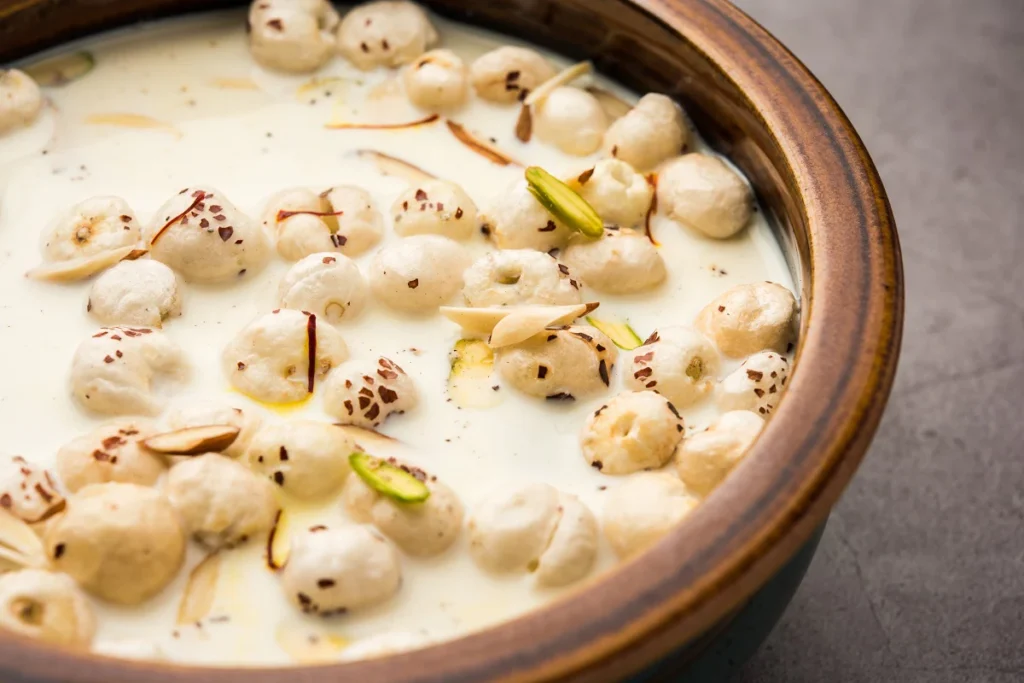
Ingredient | Quantity |
Low-fat milk | 1 litre |
Makhana (puffed lotus seeds/fox nuts) | 1/4 cup |
Dates | 3-4 (finely chopped) |
Chopped pistachios | 1 tsp |
Chopped almonds | 2 tsp |
Green cardamom powder | 1 tsp |
Nutmeg powder | 1/4 tsp |
Preparation:
- First prepare a pan and dry roast the fox nuts till they become crisp.
- Then you need to cool it and blend coarsely in a grinder or with a rolling pin.
- Next, boil the milk in a deep non-stick pan.
- Once the milk boils, add the dates and coarsely crushed lotus seeds. Mix them well and cook on a medium flame for 2-5 minutes while stirring occasionally.
- Also, add the nuts and spices. Mix and serve it warm or cold.
11) Moong Dal Chilla (Savory Lentil Pancakes)
INGREDIENTS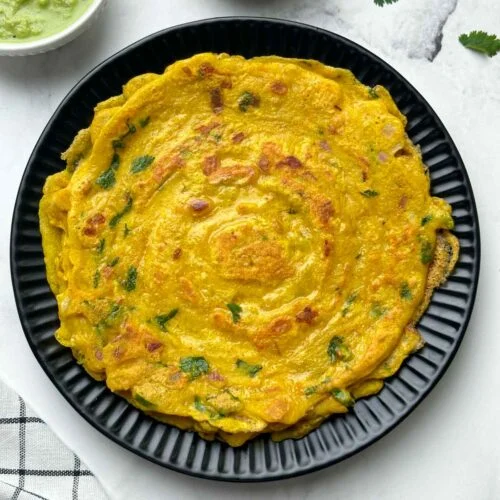
- 1 cup Split Yellow Lentils (Moong Dal)
- 3 cups Water for soaking
- 2 Green Chili Pepper finely diced
- 1 teaspoon Ginger grated
- ⅓ cup Red onion finely chopped
- 3 tablespoon Cilantro leaves chopped
- 1 teaspoon Salt adjust to taste
- 1,4 teaspoon Ground Turmeric (Haldi powder)
- ½ teaspoon Kashmiri red chili powder adjust to taste
- ⅔ cup Water or as needed
4 teaspoon Oil to cook the chilla
INSTRUCTIONS
- Add moong dal to a medium bowl. Rinse the moong dal. Add 3 cups water and soak for at least 3 hours or overnight.
- Drain the water. Transfer dal to a blender. Add about ⅔ cup water. Blend to make a smooth batter.
- Transfer the batter to a bowl. Add green chili, ginger, onion, cilantro, salt, turmeric and red chili powder. Mix well, and add 1-2 tablespoons more water if needed. Make sure the batter is not too thick or too runny, it should have a pouring consistency.
- Heat an iron skillet or non-stick pan on medium heat. Add some oil, and wipe it clean with a paper towel.
- Once the skillet is hot, turn the heat to low, take a ladle full of the batter, and pour it at the center of the pan.
- Once the skillet is hot, turn the heat to low, take a ladle full of the batter, and pour it at the center of the pan.
Using the same ladle, spread the batter on the tawa in a circular motion to make a round chilla. Now turn the heat to medium-high.
- Drizzle some oil at the edges of the chilla and at the center on the top. Total of about ¾ to 1 teaspoon.
- Cook the chilla on one side for a couple of minutes, then flip it using a spatula. You should see some golden spots on the top of the chilla after it was flipped.
- Now press with the spatula and cook the other side for 1-2 minutes.
- When the chilla is well cooked on both sides, remove to a plate. Same way make all the chilla’s. Wipe the pan with a paper towel between each chilla.
- Serve moong dal chilla right way with chutney or tomato ketchup, and a cup of chai!
Healthy Non-Vegetarian Recipes for Diabetes
1) Boiled Egg Sandwich
Ingredients:
- 4 Eggs
- 6 Slices of bread
- Hung Curd
- ¼ Teaspoon – Coarsely ground fresh black pepper
- ½ Teaspoon – Mustard paste
Method:
Step 1: Put the eggs in a cooking bowl and add water till they are submerged. Put the eggs in first to be sure they don’t crack. Bring the water to a rolling boil and reduce the heat to low.
Step 2: Let the eggs cook for 8 – 15 minutes depending on how well cooked you like it. After that, drain the water and cool the eggs off in water or ice.
Step 3: Once the eggs cool, peel off the shell and dice the eggs up into small bits. Mix well in a bowl with black pepper, mustard paste, salt and half a cup of curd. Divide the mix into equal portions for each sandwich.
Step 4: Once the eggs cool, peel off the shell and dice the eggs up into small bits. Mix well in a bowl with black pepper, mustard paste, salt and half a cup of curd. Divide the mix into equal portions for each sandwich.
Another excellent choice is egg bhurji and dosa for diabetes. Both are easy to make and if you make millet dosa for diabetes, it is even healthier.
2) Egg bhurji with Roti
Some fluffy egg bhurji with rotis is an ideal way to start the day. It’s easy to make and so nutritious and delicious too.
Ingredients:
- 4 Eggs
- 2 onions, finely chopped
- 2 tomatoes, chopped
- 3 green chillies or as per taste
- 1 capsicum, chopped
- 2-inch ginger, finely chopped
- 1/2 cup coriander leaves
- 3 – 4 curry leaves
- 1 tbsp vegetable oil or ghee
- 1 tsp jeera
- 1 tsp red chilli powder
- 1 tsp turmeric powder
- As per taste pav bhaji masala
- A pinch of asafoetida (hing)
- Salt (as per taste)
Method:
Step 1: In a large bowl, whisk the eggs using a spoon and keep them aside.
Step 2: Take a pan, add oil or ghee and heat. Now add jeera, onions, hing, green chillies, curry leaves, capsicum and ginger. Saute for 3 – 4 minutes.
Step 3: Add tomatoes and few coriander leaves. Saute for 2 minutes.
Step 4: Add 1 tbsp butter, pav bhaji masala, red chilli powder, turmeric powder and salt as per taste. Mix well.
Step 5: Lastly, pour in the slightly beaten eggs and keep whisking until cooked.
Step 6: Top it up with butter. Garnish with the remaining coriander leaves.
3) Chicken Curry and Roti
Probably one of the easiest of the Indian non-veg recipes for people with diabetes, chicken curry and roti is a strong combo.
Ingredients:
- 400 grams – boneless chicken
- Salt to taste
- 1½ teaspoon oil
- 1 teaspoon – cumin seeds
- 1 tablespoon – ginger-garlic paste
- 1 large onion – chopped
- 1 cup – tomato puree
- 1 teaspoon – coriander powder
- 1 teaspoon – pav bhaji masala
- ¼ teaspoon – turmeric powder
- ½ teaspoon – cumin powder
- 2 tablespoons – fresh coriander leaves
- 1 teaspoon – red chilli powder
Method:
Step 1: Heat oil on a pan. Once hot, add cumin seeds and wait for a change of colour. Now add chopped onions and saute until it turns golden brown.
Step 2: Add ginger-garlic paste and continue to saute until you get an aroma. Next, add salt along with tomato puree and cook it until it becomes nice and mushy, integrating with the onions.
Step 3: After you’ve got a nice mushy paste consistency, add all the powders to get the masala flavours, add chicken, coriander leaves, salt and mix well and increase the heat for 2 minutes.
Step 4: Add 1 ½ cups of water and cook until you get a nice curry consistency.
Step 5: Serve with some coriander leaves as garnish.
4) Healthy Tandoori Fish
Ingredients: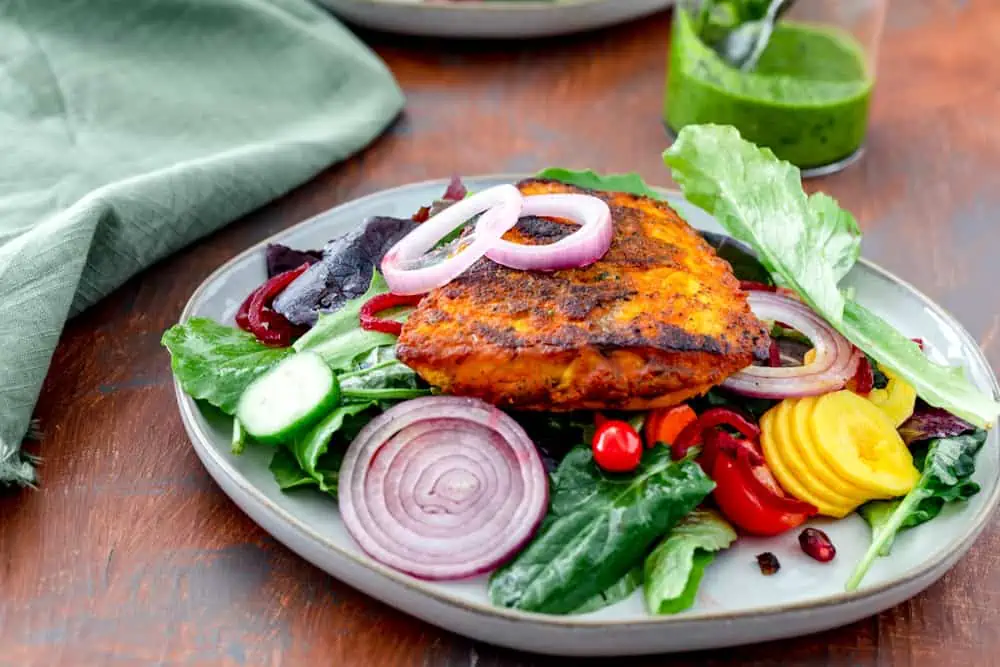
- 300 gms Salmon, Herring or Mackeral
- 8 cloves garlic
- 1 piece ginger
- 1 tablespoon grated lime zest
- 1/2 teaspoon cumin powder
- Salt as required
- 3 tablespoon gram flour (besan)
- 2 handful coriander leaves
- 2 tablespoon lime juice
- 1 tablespoon red chilli powder
- 1/2 tablespoon garam masala powder
- 1 cup vegetable oil
- 120 gm curd
Method:
Step 1: Wash and clean the fish. Next, make a fine paste with half of the vegetable oil, garlic, coriander, ginger, red chilli powder, cumin powder, garam masala, lime juice and zest and salt.
Step 2: Heat the oil in a pan and add the gram flour, stir to make a paste and cook for about a minute till fragrant and lightly coloured.
Step 3: Add the mixture to the spice paste and combine with the yoghurt. Mix well all the ingredients for the marinade.
Step 4: Gently rub the marinade over the fish pieces and marinate for an hour. Preheat the oven to 200° Celsius and spread out the marinated fish in a baking dish.
Step 5: Bake the tandoori fish for 10 – 15 minutes on the top rack, turning the fish pieces once. Baste the fish pieces once or twice during cooking with butter. Serve hot with chutney or sauce.
5) Grilled Chicken Breast
Ingredients:
- 500 gms boneless chicken breast without the skin
- 3 tablespoons – olive oil (extra virgin)
- 4 large cloves of garlic, minced
- 1 teaspoon – thyme (dried)
- ½ teaspoon – oregano (dried)
- Salt to taste. Recommended – 1¼ teaspoons
- ½ teaspoon – ground black pepper
- 1 teaspoon – lemon zest
Method:
Step 1: Find a ziplock bag and lay the chicken flat inside it. Use something heavy and wide to pound it so that it spreads wider. Do this until it is around ½ inch thick. Take care not to hit it too hard, it is better to take your time and use consistent blows.
Step 2: Mix all the other ingredients in a bowl and add it to the ziplock bag if it is still in good shape, if you don’t have a usable ziplock you can do this on a plate. Massage the chicken so that the mix is evenly spread across it. After this, put the bag or plate in the fridge and let it stay there for at least 4 hours so it can absorb the marinade.
Step 3: Once ready, preheat the oven for a while before you add the chicken. It should cook quickly, so keep it on each side for 3 minutes to get the grill marks. Once done, serve and eat.
6) Hariyali Egg Curry with Ragi Roti
Ingredients: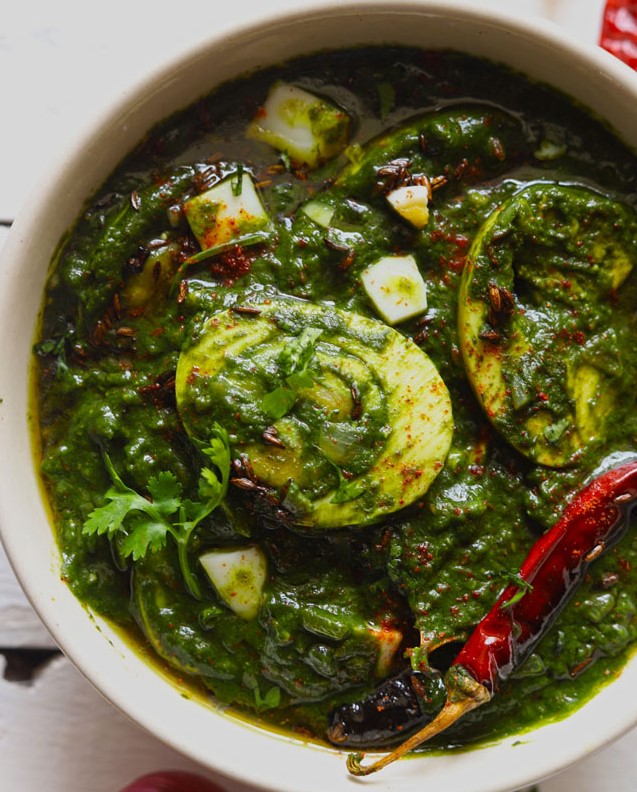
- 4 whole eggs, boiled
- 1 cinnamon stick (dalchini), small
- 1 bay leaf (tej patta)
- 2 cloves (laung)
- 1 tablespoon oil
- 2 teaspoons coriander powder (dhania)
- 1 teaspoon garam masala powder
- 2 tablespoons fresh cream
Ingredients for the Hariyali Masala
- 2 cups coriander (dhania) leaves, tightly packed, chopped
- 1 cup mint leaves (pudina), chopped
- 2 green chillies, chopped
Ingredients for the Onion Masala
- 1 onion, roughly chopped
- 1-inch ginger, chopped
- 4 cloves garlic
Method:
Step 1: Into the Mixer Grinder (medium jar), add the coriander leaves, mint leaves, green chillies and 1/2 cup water. Blend all of them together to make a smooth paste and keep it aside.
Step 2: Add onions, ginger and garlic into the small jar of the mixer grinder and grind to make a paste.
Step 3: Heat 1 tablespoon oil in a kadai over medium heat, add the bay leaf (tej patta), cloves, cinnamon stick and roast for a few seconds. Add the onion ginger garlic paste.
Step 4: Saute for 4 to 5 minutes until the raw onion smell goes away.
Step 5: Once the onions are roasted, add garam masala powder, coriander powder and saute for a few seconds.
Step 6: Add the hariyali coriander mint mixture, the fresh cream and the 4 boiled eggs.
Step 7: Add water if required to adjust the consistency of the hariyali egg curry. Cover & simmer the hariyali egg curry for 5 minutes.
Step 8: Check the salt and spices and adjust according to your taste and transfer the hariyali egg curry into a serving bowl.
Step 9: Serve with ragi roti for that healthy combo.
In a Nutshell
- If you think you have to give up tasty food when you are diagnosed with diabetes, think otherwise. It doesn’t matter if you are vegetarian or non-vegetarian, there are plenty of healthy and delicious recipes you can try out.
- Most people with diabetes think that they would have to eliminate non-vegetarian due to the impact it might have on their blood sugar. However, most food is eaten in moderation, even non-vegetarian items can help keep you fit.
- Meal prep is a great way to control your portions and it also saves time.




















